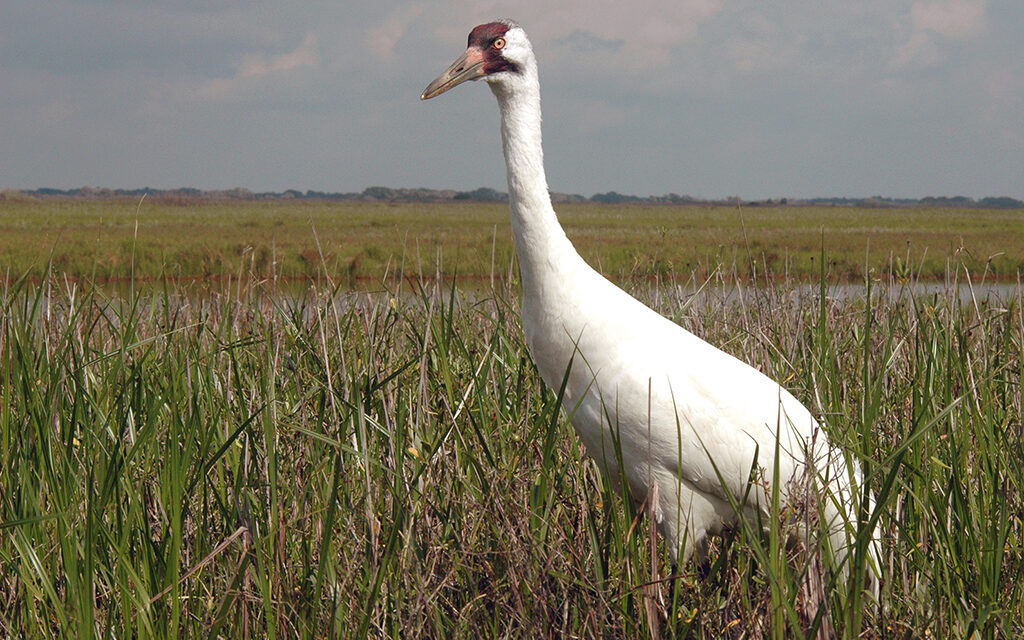by John Jefferson
This is a true story about an 80-plus year effort to restore a majestic bird that almost disappeared from Earth.
Whooping crane conservation and reclamation began with the realization of a crisis in the 1940s.
At one time, whooping crane populations estimates were between 15,000 and 20,000 birds. But beginning in the 1800s, habitat loss, hunting, and other causes drastically reduced whoopers’ population. It bottomed out at fifteen known cranes in 1941.
Through wise management, strict enforcement, and public education, the population has slowly crept back. The 2022 estimates claimed 540 whooping cranes!
A recent press release from Texas Parks and Wildlife Department said the first pair of whoopers this year was seen on November 1. The release reported they were tardy by about ten days. But Captain Lori Sims, of Aransas Bay Birding Charters (361-790-3742), said it was a little earlier than in the past two years. And she’s on the water almost every day.
Representatives from the International Crane Foundation recently placed signs in whooping crane habitat on the Aransas National Wildlife Refuge along the Gulf Intracoastal Waterway where the birds winter after their 2,500-mile flight from Wood Buffalo National Park in Canada. The signs, which Capt. Lori assisted with placing, warn the public that no one is allowed on that area. There are consequences.
The Crane Foundation reported that thirty percent of the tagged whoopers had arrived. That sounds like they’re on schedule.
Captain Kevin Sims, with the same charter company, told me the cranes were on time. He said, “Many came with the big cold front two weeks ago. More are arriving daily. I would say there are easily over a hundred here, now.”
I led photo workshops there for eight years and witnessed a man afoot on the refuge near several cranes. I hoped he was merely ignorant of the rules. The skipper of the tour boat we were on properly reported the interloper to the refuge headquarters.
The attached photo could lead some to suspect me of being on the refuge from the closeness to the bird. Not so. We were on a small boat and had stopped before we approached a pair of cranes so as not to spook them. As we sat silently watched, one crane on the shore began walking toward us. To my shock – and delight – it walked very close, stopped, and looked at us. Hence, the picture. Usually when approached too closely, they take flight.
Captain Tommy Moore, of Whooping Crane Charters (877-892-4737), is a 30-year veteran tour boat operator. His office tells me his boat, the Skimmer, is out of the water for repairs until after Thanksgiving. The Skimmer handles groups and individuals starting at $45.
Aransas Bay Birding Charters (361-790-3746) operates a smaller boat especially designed for serious photographers. Taking a maximum of six costs $550. For less than six, the first four costs $500.
Either one of these can get clients close to these endangered species without threatening them.
Whoopers are in Texas until April.
JJ





